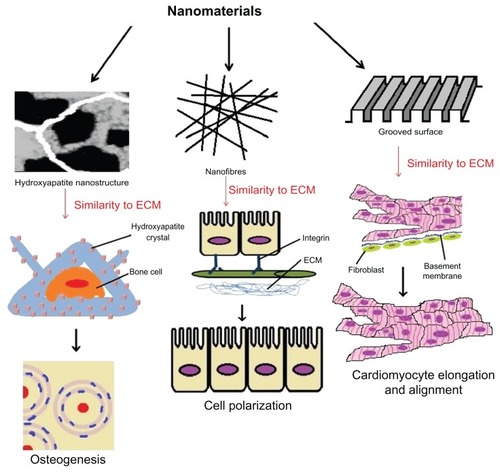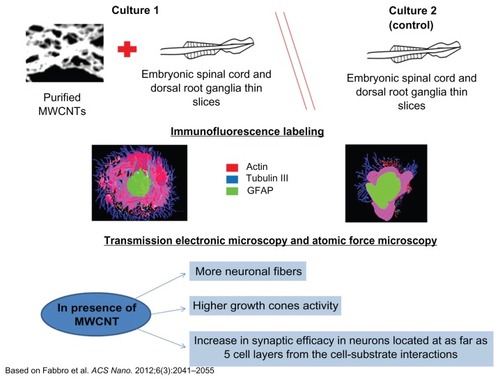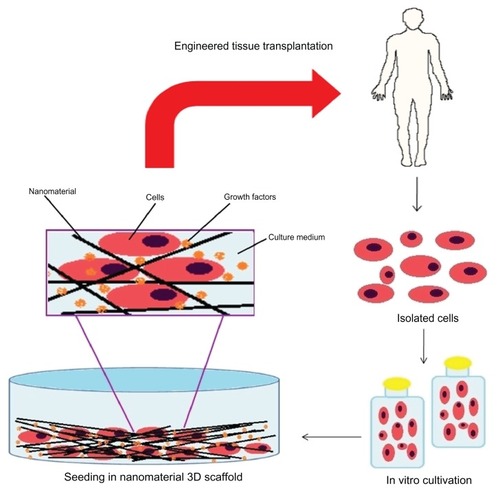Figures & data
Table 1 Applications of CNTs in tissue engineering
Figure 1 Carbon nanotubes interacting with different cells for tissue engineering.
Abbreviation: ECM, extracellular matrix.

Figure 2 Schematic organotypic spinal slices to model multilayer tissue complexity, interfaced with spinal segments to carbon nanotube scaffolds.
Notes: By immunofluorescence, scanning and transmission electronic microscopy, and atomic force microscopy, nerve fiber growth when neuronal processes exit the spinal explant and develop in direct contact to the substrate was observed, indicating that spinal cord explants interfaced for weeks with purified carbon nanotube scaffolds and grew more neuronal fibers, characterized by different mechanical properties and displaying higher growth-cone activity.
Abbreviations: MWNTs, multiwalled carbon nanotubes; GFAP, glial fibrillary acidic protein.

Figure 4 Composites of carbon nanotubes and collagen can resemble extracellular matrix, leading to diverse cell response, which can be directed according to carbon nanotube functionalization. © 2009, Springer. Adapted with kind permission from Springer Science and Business Media: Silva EE, Colleta HHMD, Ferlauto AS, et al. Nanostructured 3-D collagen/nanotube biocomposites for future bone regeneration scaffolds. Nano Res. 2009;2:462–473.Citation52
Abbreviations: CNTs, carbon nanotubes; ECM, extracellular matrix.

